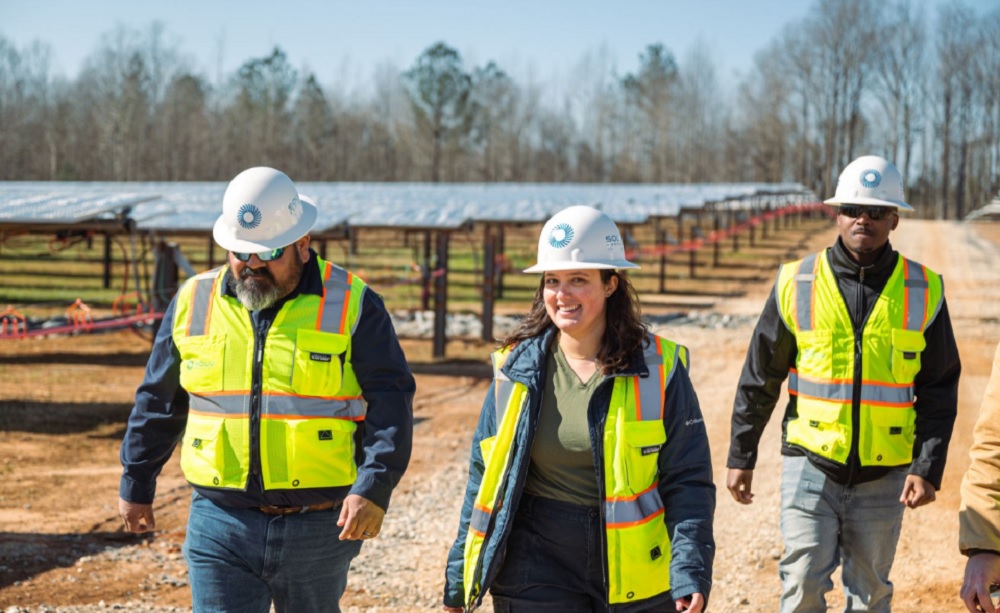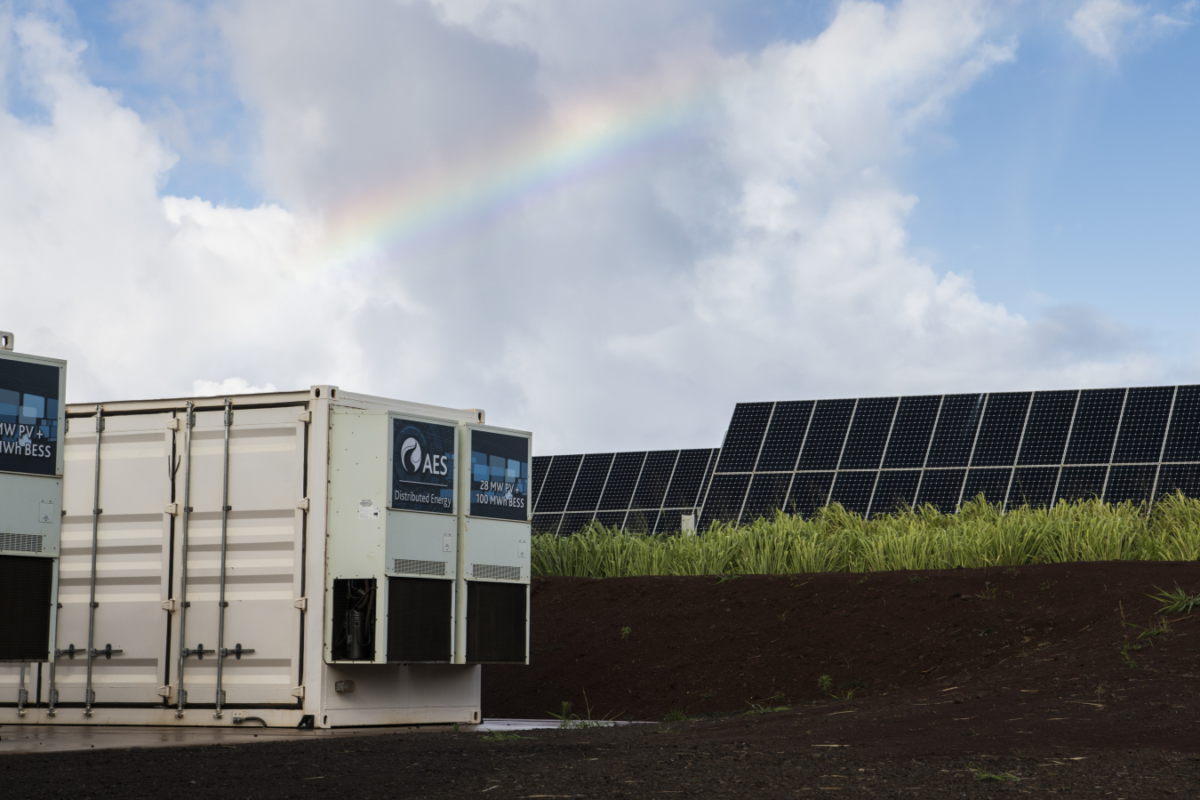Nearly two years following passage of the Inflation Reduction Act of 2022 (IRA), Treasury and the IRS released the unpublished version of the final rule (Final Rule) for compliance with the IRA’s prevailing wage and apprenticeship requirements (PWA requirements).
Taxpayers seeking to claim the highest available investment and/or production tax credits for renewable energy projects must comply with the PWA requirements. A taxpayer must ensure that laborers or mechanics employed by the taxpayer or any contractor or subcontractor in the construction, alteration, or repair of a qualifying facility comply with the PWA requirements.
The Final Rule concludes the federal rulemaking process for the PWA requirements. (Note: The Final Rule is scheduled to be officially published on June 25, 2024, and therefore this article relies on the unpublished version.)
The Final Rule will replace the previously-issued Notice of Proposed Rulemaking (released August 30, 2023) (NOPR), which replaced the Initial Guidance (released November 30, 2022). Overall, the Final Rule is generally consistent with the NOPR, providing helpful clarification on industry concerns raised in comments to the NOPR. However, the Final Rule expressly declines to address industry-specific concerns, emphasizing that determinations of compliance with PWA requirements will be made based upon specific facts and circumstances. It therefore leaves several questions open to interpretation, including whether commissioning work is subject to PWA requirements and to what extent certain post-operational work may be subject to PWA requirements.
Clarifications
First, with respect to when PWA requirements apply, the Final Rule provides two useful clarifications:
Its supplementary information notes that “unrelated third party manufacturers who produce materials, supplies, equipment, and prefabricated components for multiple customers or the general public” are not subject to PWA requirements. In other words, most suppliers (absent performance of construction, alteration or repair on a project site) will not be subject to PWA requirements.
It also clarifies that apprenticeship requirements only apply to the construction of a qualified facility, and do not apply to alteration or repair of a facility after the facility is placed in service. In other words, most operations and maintenance vendors will not be subject to apprenticeship requirements.
Second, with respect to payment of prevailing wages, the Final Rule outlines regulations consistent with the NOPR: A taxpayer must ensure that laborers or mechanics employed by the taxpayer or any contractor or subcontractor in the construction, alteration, or repair of the facility are paid prevailing wages for the specific type of construction in the geographic area where the facility is located. The definitions of “laborers and mechanics” and “construction, alteration or repair” provided in the Davis-Bacon Act (40 U.S.C. § 3141 et. seq.) apply to the PWA requirements. General wage determinations issued by the Department of Labor’s Wage and Hour Division on www.sam.gov provide the appropriate prevailing wages for PWA requirements. The Final Rule lists Form WH-347 (the Davis-Bacon form for certified payroll) as one example of a record that may demonstrate compliance with PWA requirements.
Notably, however, the Final Rule distinguishes prevailing wage requirements from Davis-Bacon Act requirements – noting that prevailing wage requirements pursuant to the IRA are not a mirror of the Davis-Bacon Act, but instead may be merely in harmony with Davis-Bacon requirements. Treasury and the IRS therefore declined to implement certified weekly payroll, public notice, and other Davis-Bacon Act requirements as part of the PWA requirements.
While the Davis-Bacon Act focuses on the “site of the work” to determine when prevailing wages must be paid, the Final Rule uses a similar concept of “the locality in which a facility is located.” The locality in which a facility is located is the physical place or places where the facility will be placed in service and remain – commonly understood as the project site. It also includes secondary locations where a significant portion of the facility is constructed, altered, or repaired – but excludes secondary locations for fabrication or manufacturing that are not established specifically or dedicated exclusively for a specific period of time to the facility.
Significantly, the Final Rule largely resolves the question of which prevailing wage applies to a facility. It confirms that the prevailing wage in effect at the time the agreement for construction, alteration or repair of the facility is executed is the wage that applies for purposes of the PWA requirements. The same wage general wage determination may still be used if the contractor is given additional time to complete its original commitment or if additional work is incorporated into the agreement that is “merely incidental,” which provides reassurance with respect to usual course of business change orders during construction of a facility. If, however, the agreement is modified to include “additional substantial construction, alteration or repair work not within the scope of the work of the original contract,” or if the agreement is modified to “required work to be performed for an additional time period not originally obligated,” including exercise of an option to extend the terms of an agreement, a new general wage determination will be required.
For wage determinations needed and not covered by a general wage determination, the Final Rule generally follows the NOPR’s outline for submission of supplemental wage determination requests to the Wage and Hour Division. The Final Rule notes that taxpayers, contractors or subcontractors may submit supplemental wage determination requests. Such requests should be submitted no more than 90 days before the expected execution of a construction contract (or at any time following execution), and will remain effective for 180 calendar days after they are issued (or for the duration of the time the supplemental wage determination is incorporated into the contract).
The Final Rule also provides that the Wage and Hour Division will resolve supplemental wage determination requests, or notify the requester that additional time is necessary, within 30 days of submission of a request. If a supplemental wage determination is issued after construction work has started on the facility, it applies retroactively to the date construction started.
Third, with respect to apprenticeship requirements, the Final Rule incorporates many proposed regulations from the NOPR, including the three-pronged approach necessary to comply: taxpayers must ensure the labor hour requirement, the ratio requirement, and the participation requirement are each satisfied.
Many of the ambiguities raised in comments to the NOPR regarding apprenticeship focused on the Good Faith Effort Exception, and the Final Rule addresses several of them. Requests made to registered apprenticeship programs must be made in writing and sent electronically or by registered mail. Initial requests must be made no later than 45 days before the qualified apprentices are requested to start work, and subsequent requests must be made no later than 14 days before the qualified apprentices are requested to start work. The content of each request remains as outlined in the NOPR.
The Final Rule extends the period between requests on which a taxpayer may rely on the Good Faith Effort Exception to a full calendar year. In the event a request to a registered apprenticeship program is either denied or not responded to, a taxpayer will need to ensure an additional request is submitted annually in order to rely on the Good Faith Effort Exemption. There is no limit on the number of requests that may be submitted to a program, and there is no requirement to make subsequent requests to the same program (or to follow up on requests that are not responded to).
If a request to a registered apprenticeship program is partially denied, in order to satisfy the Good Faith Effort Exception requirements, the requesting party must accept the qualified apprentices offered (and may then consider the remaining portion as labor hours performed by qualified apprentices). An employer-sponsored registered apprenticeship program may not be used by such employer to satisfy the Good Faith Effort Exception requirements, unless the employer submits compliant requests to at least one registered apprenticeship program that it does not sponsor.
Finally, the Final Rule outlines in a separate recordkeeping section a list of records that may be sufficient to demonstrate compliance with PWA requirements. It notes that taxpayers may satisfy such recordkeeping requirements by collecting and physically retaining the records; providing them to a third-party vendor; or having each party physically retain relevant records (unredacted copies of which must be made available to the IRS upon request).
It confirms again that taxpayers are entitled to a rebuttable presumption of no intentional disregard if a taxpayer makes the appropriate correction and penalty payments before receiving notice of an examination from the IRS with respect to a claim for the increased credit. While continuing to emphasize that findings of “intentional disregard” of the PWA requirements will be made based on specific facts and circumstances, the Final Rule also provides 15 examples (for prevailing wage compliance) and 13 examples (for apprenticeship compliance) of facts and circumstances that may be considered in such a finding, including whether the failure was a pattern of conduct, whether the taxpayer took reasonable steps to monitor, review and correct compliance efforts, whether the taxpayer incorporated provisions in its agreements requiring compliance with the PWA requirements, and what documentation and records the taxpayer collected to ensure such compliance.
The Final Rule also establishes a 180-day limit for the taxpayer to pay correction and penalty payments following a final determination from the IRS that the taxpayer has failed to satisfy PWA requirements.
Overall, the Final Rule provides helpful clarity to renewable energy developers and contractors enacting and enforcing PWA requirements throughout the industry. However, leaves open industry-specific questions such as what scope of work constitutes “repair” rather than “maintenance,” particularly during operation of a facility. It also fails to address whether on-site commissioning work constitutes “construction, alteration or repair” sufficient to trigger obligations to comply with PWA requirements. These questions will remain subject to assessment based on specific facts and circumstances, and prudent industry developers and contractors will need to carefully consider and document how they approach compliance with PWA requirements consistent with prudent industry practices.
Monica Dozier and Jennifer Trulock are partners at Bradley Arant Boult Cummings LLP and regularly advise clients on labor and employment issues in the renewable energy industry.
The views and opinions expressed in this article are the author’s own, and do not necessarily reflect those held by pv magazine.
This content is protected by copyright and may not be reused. If you want to cooperate with us and would like to reuse some of our content, please contact: editors@pv-magazine.com.








By submitting this form you agree to pv magazine using your data for the purposes of publishing your comment.
Your personal data will only be disclosed or otherwise transmitted to third parties for the purposes of spam filtering or if this is necessary for technical maintenance of the website. Any other transfer to third parties will not take place unless this is justified on the basis of applicable data protection regulations or if pv magazine is legally obliged to do so.
You may revoke this consent at any time with effect for the future, in which case your personal data will be deleted immediately. Otherwise, your data will be deleted if pv magazine has processed your request or the purpose of data storage is fulfilled.
Further information on data privacy can be found in our Data Protection Policy.